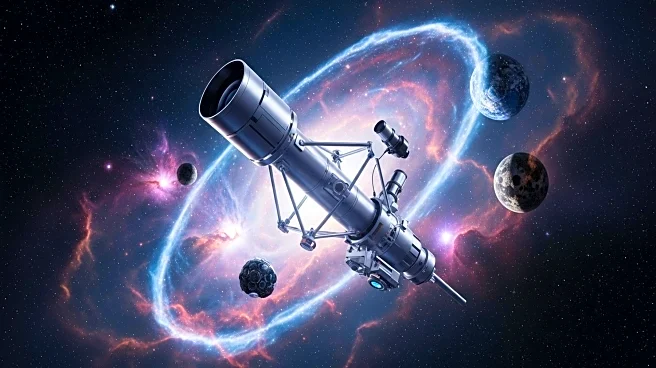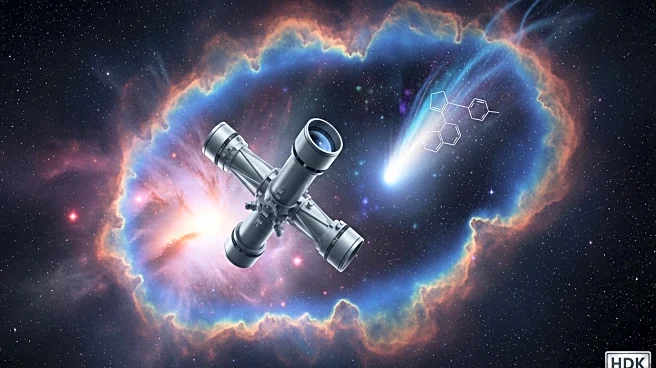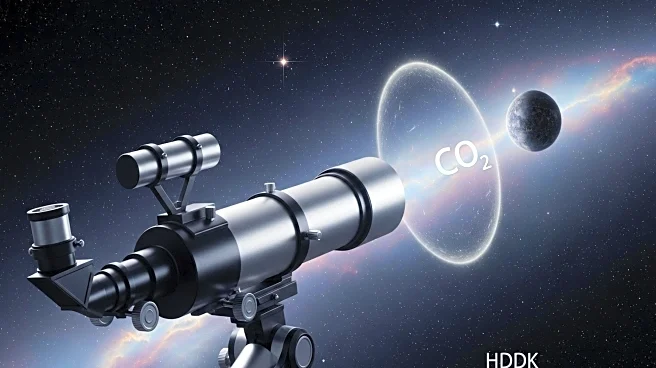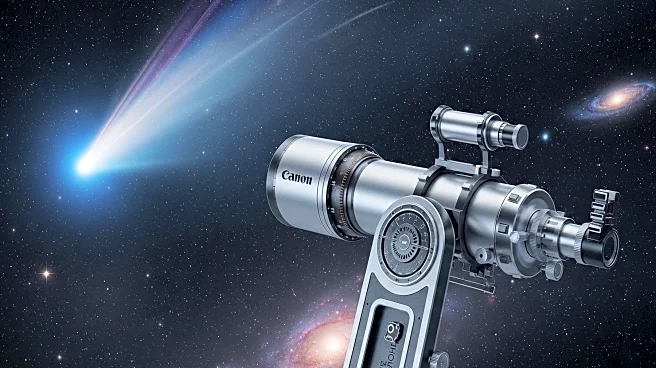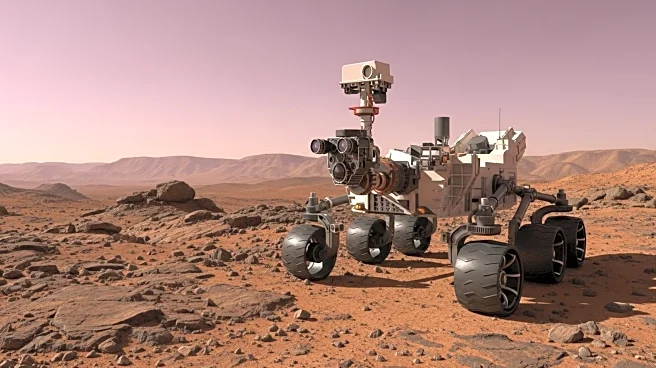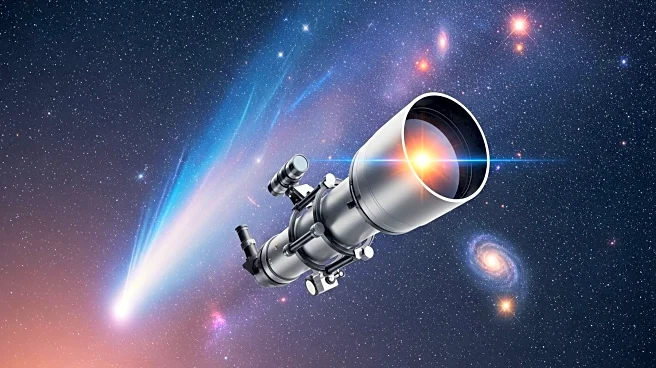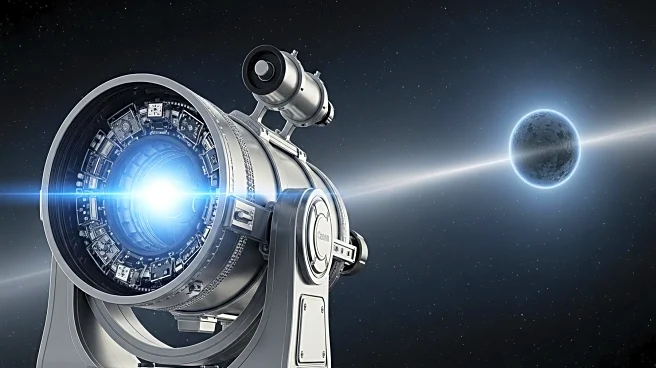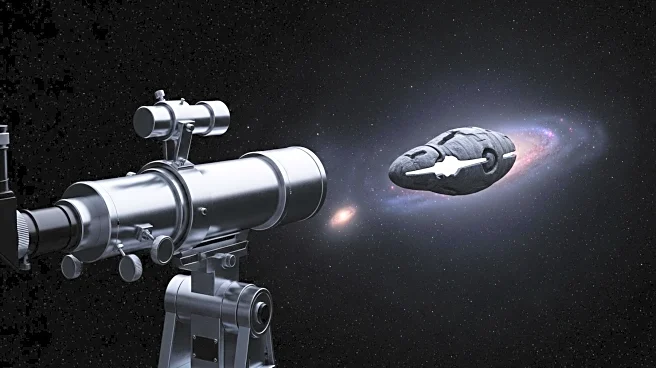What's Happening?
NASA's SPHEREx space observatory has reported unusual chemical activity in the gas plume surrounding the interstellar object 3I/ATLAS. Spectroscopic data from the Very Large Telescope revealed a steep rise in the production of cyanide and nickel without iron, which is atypical for natural comets. This anomaly suggests a possible technological origin for 3I/ATLAS, as nickel without iron is a signature of industrial production. The object exhibits a dramatic increase in nickel mass loss rate as it approaches the Sun, with cyanide showing an even steeper dependence on heliocentric distance. The findings challenge the conventional understanding of cometary composition and raise questions about the object's origin.
Why It's Important?
The detection of nickel without iron in 3I/ATLAS's gas plume is significant as it hints at a potential technological origin, which could have profound implications for our understanding of interstellar objects. If 3I/ATLAS is indeed of technological design, it could represent evidence of extraterrestrial technology, prompting a reevaluation of our place in the universe. The anomaly also highlights the need for further investigation into the chemical processes occurring in interstellar objects. Understanding these processes could provide insights into the formation and evolution of celestial bodies and inform future space exploration missions.
What's Next?
On October 3, 2025, 3I/ATLAS will pass within 29 million kilometers of the Mars Reconnaissance Orbiter, allowing for high-resolution imaging that could clarify the object's composition. Scientists are considering using radio telescopes to detect any technological transmissions from 3I/ATLAS. These observations could help determine whether the object is a natural comet or has a technological origin. The upcoming encounter presents an opportunity to gather more data and potentially uncover new information about interstellar objects.
Beyond the Headlines
The study of 3I/ATLAS raises ethical and philosophical questions about the search for extraterrestrial life and technology. The possibility of encountering alien technology challenges our understanding of the universe and our role within it. The findings also underscore the importance of open-mindedness and scientific curiosity in exploring unconventional hypotheses. As researchers continue to investigate 3I/ATLAS, the scientific community must balance skepticism with the potential for groundbreaking discoveries.
